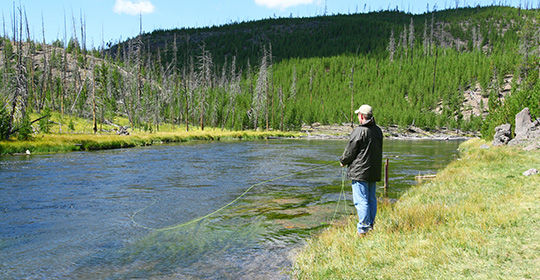A Few of the Best Freshwater Fishing Knots for California
By Andy Whitcomb
Jan 15, 2024
California has a diverse selection of freshwater fishing opportunities. Sometimes the best knot to tie depends on the species, presentation, or conditions. Here are a few options you should knot be without.
Many things must go right for a California fishing trip to be successful such as the line remaining attached to the lure or hook. Although there is a fair amount of overlap in the use, there are knots that can work better than others for certain species, presentations, or conditions. The first step in learning how to tie freshwater fishing knots for California is to determine which knot you want to use and why. Here then, are a few of the best freshwater fishing knots in California, highlighted by two fishing knot schools of thought.
Knots for Bass

The first of the freshwater fishing knots for California bass that should be covered is the essential, improved clinch knot. There are many sources for a step-by-step guide to freshwater fishing knots for California online or in books, but this knot is 5- or 6-line twists, the tag through the bottom of the twists, and then the tag through the loop you just created. This might sound complicated, but Dad taught me this knot when I was about 4 or 5 years old so I’m sure you can tie it. It is versatile and used for most standard fishing situations as well as specifically for bass lures such as soft-plastics, spinnerbaits, or crankbaits.
The Palomar knot is another of the common freshwater fishing knots for California bass. It is often used with braided lines but also works great with monofilament. With a little practice, the Palomar knot can be tied more quickly than the improved clinch, especially with cold hands. If you are adept at following written instructions as a tutorial on freshwater fishing knots for California, this knot is a loop passing through the eye of the hook or lure, creating a loose overhand knot, and then passing the hook or lure through the end loop. The long tag end can then be trimmed or used for a drop-shot rig.
Another common bass fishing knot scenario is when two different lines need to be joined. Bass anglers often must join braided line to a clear fluorocarbon leader. Or, sometimes some of the newer super lines are sold in quantities that will not fill a reel, so another line is used as backing. For these purposes, investigate the double uni knot, blood fishing knot or the surgeon’s knot. These are a little more complicated, so I won’t even try to explain where “the rabbit goes” for these here.
Knots for Trout

Due to the unique waters and fly fishing techniques, freshwater fishing knots for California trout are different still. Here again, there is a need for joining lines, such as fly line to a much thinner diametered leader. For this, there are options but I suggest looking up instructions for the nail knot. In the right frame of mind, tying this knot is kind of a fun trick, using an actual nail.
For connecting the fly to the tippet, there are options, but many anglers opt for the clinch knot. Recall the improved clinch knot above? Do that, but just don’t improve it with the last step. This also is a good knot for assembling tandem fly rigs with a dropper fly. However, when fishing for California trout be sure to check the lengthy trout special section of the fishing regulations. Rules vary by specific waters. For example, in “anadromous waters,” which are tributaries that run to the ocean or sometimes very large lakes, there needs to be at least 6 feet between the fly and any weight.
Whichever you consider as the best freshwater fishing knots for California, or any other state for that matter, here are a couple more tips. Practice when you are in a patient mood so that when it comes to crunch time, you’ve got it down. Also, every time you tie a knot, make sure is seats properly and then give it a bit of a test tug. Each knot has a signature look. If anything looks off, retie. It just may keep you connected to that fish of a lifetime.









